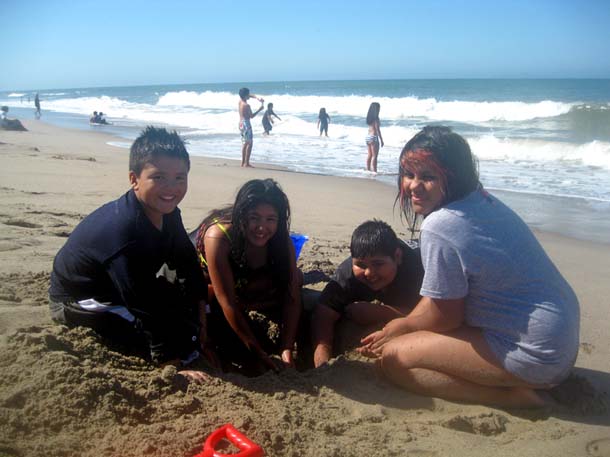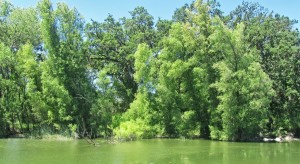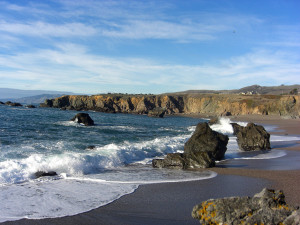Of the more than 20 Southern California state beach parks, McGrath State Beach was the unlucky one that wound up on the closure list. It wasn’t for lack of revenues. McGrath is a popular park in Ventura County, about 60 miles northwest of Los Angeles, with 174 campsites booked solid from Memorial Day through Labor Day and about 160,000 visitors a year. McGrath’s problem was that its sewage system needed replacement, a job that would cost half a million dollars that the state parks department didn’t have.
People who know McGrath tend to feel passionate about it. While many state beaches are little more than a strip of sand between asphalt and ocean, McGrath’s 295 acres are one of the best places to see birds in all of California. You drive to a wooded campground with “lawn” areas covered with pickleweed and saltgrass. From there, you can meander through sand dunes to the 2.5-mile-long beach, visiting marshes, an estuary, and a freshwater lake along the way. On the park’s northern border the Santa Clara River pours into the ocean, flooding access to (and closing) the park each year for several months.
- McGrath SB is a great place for kids. Photo by Cindy Crawford.
Ventura Sector Superintendent Eric Hjelstrom considers McGrath a jewel of the Southern California beach parks. “Out on the dunes, you feel like you’re in Baja,” he says.
As soon as the closures were announced in May 2011, the “McGrath Army” began to assemble. Among them was Cindy Crawford, a cheerful educational technology specialist from Long Beach who likes to camp, hike, and enjoy nature at McGrath with her kids and grandkids. “It’s a natural sand dune beach,” Crawford says. “Spring is absolutely beautiful. The dunes are covered in beach evening primrose and sand verbena. And I’ve seen things there–a bobcat on the beach, coyotes, and more birds than I could count.” Crawford and a couple of dozen other McGrath fans decided to “try to raise as much money as we could, even if it wasn’t enough.”
Superintendent Hjelstrom is a biologist and former Peace Corps volunteer who is new to his supervisory post. With six parks to manage, he dreaded becoming known as “the superintendent who let a park go in the first summer.” And he admits to being intimidated by Crawford at first. “You get a lot of calls from people who are very critical,” he says. “But the thing that really intrigued me about Cindy was that she was never negative. She was almost like a cheerleader. Her attitude was so infectious that I just thought, well, shoot–why not ”
In the end, Hjelstrom and Crawford worked together to keep the park open. Hjelstrom and his boss, district superintendent Rich Rozzelle, filed for a $250,000 federal grant from the state’s Land and Water Conservation Fund (LWCF), which had to be matched by local money. They also set up a McGrath contingency fund for the small donations that were already starting to arrive in amounts ranging from $1 to $100.
Meanwhile, Crawford noticed that Coca-Cola was offering $100,000 to the U.S. park that received the most votes in an online popularity contest. By taking multiple digital steps, people could vote as many times as they wanted. Wearing “Save McGrath” T-shirts, the McGrath Army staged rallies in the park, where they handed out fliers and showed people how to vote on their cell phones. People voted from their tents, their cars, and their homes. Crawford freely admits to having voted 13,000 times herself. (“I figured out how to do it really fast.”)
Crawford and others began contacting all the local elected representatives to ask them to help get votes, too. Local businesses began encouraging their employees to vote. The McGrath campground hosts voted so frequently they had to upgrade their cell phone plan.
As the vote totals rose, Crawford says, the McGrath Army called up “every news station on the face of the planet.” Soon the park had ascended to Coca-Cola’s top ten. With two weeks of voting left, hopes were high that it would make the top three and get a cash award.
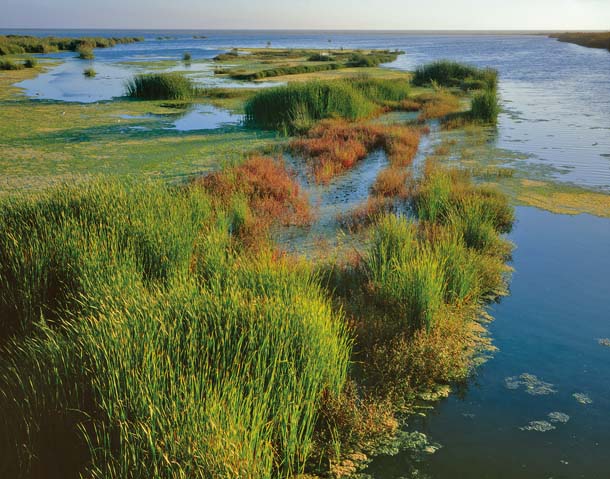
- These wetlands near the mouth of the Santa Clara River help make McGrath SB one of the best places in California to see birds. Photo by Ed Callaert.
In the end, though, McGrath’s 400,224 votes fell short of the 3 million amassed by the winner, Oak Park in Minot, North Dakota. McGrath came in sixth, and the park closed for the season–and seemingly forever.
But in late November 2011, the LWCF grant came through. Thanks to the upwelling of contest-generated public support, matching funds were swiftly forthcoming. Two grants of $50,000 each came from the city of Oxnard and Ventura County. The state park district eked $100,000 out of its maintenance fund. And a park-loving businessman who owns a reinsurance firm in Los Angeles kicked in the final $50,000.
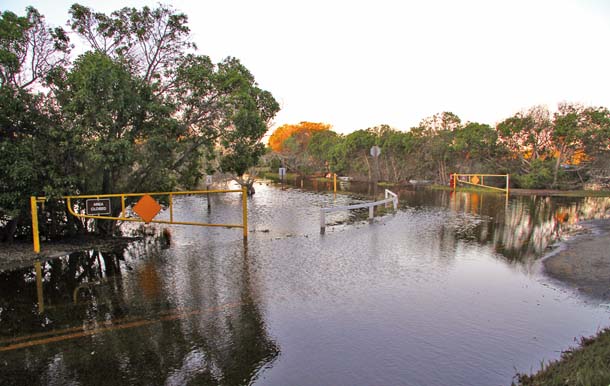
- The Santa Clara River frequently overtops its banks in winter, flooding the campground and causing seasonal closure of the park. Photo by Rick Lewis.
Suddenly McGrath had more than it needed for repairs, the work was scheduled for this winter, and the park was taken off the closure list. It is expected to reopen this summer (2012)–exactly as the McGrath Army had hoped.
Hjelstrom says the whole affair taught him not to give up on people’s love of parks–and their power to protect them. “A lot of people have lost trust in government, but that doesn’t mean they are ready to throw the baby out with the bathwater.”
After the sewage work is complete, McGrath’s staff and supporters dream of raising even more money to improve the park, moving parts of the campground out of the flood zone and restoring marsh habitat. But that will come later. At year’s end they were still letting their victory sink in. “There are times when I’m walking a foot off the ground, thinking, ‘Did we really pull it off?'” Hjelstrom says.
Crawford is celebrating too, but she hasn’t taken Hjelstrom off her speed-dial list yet. “SaveD McGrath!!” says the Facebook page where it all began. “But stay tuned for more!”
The Elephant in the Parks
As California state park budgets have tightened, the job of maintaining the parks’ infrastructure has been put off until a brighter day. In the system as a whole, there’s a $1.3 billion backlog of deferred maintenance that is expected to grow to $1.7 billion by 2015. If it’s not an ancient sewage system threatening to close the gates, as at McGrath State Beach, it’s crumbling roads, roofs, bridges, or water pipes.
Another example is the adobe home of the last Mexican governor of Alta California, which still stands at Pio Pico State Historic Park in Whittier. Built in 1853, “The adobe will fall down if we don’t maintain it,” says Carolyn Schoff, president of Friends of Pio Pico. “But that’s been put on hold because of the budget cuts.”
A broken water system forced Mitchell Caverns, the main attraction in the Providence Mountains State Recreation Area, to close in the spring of 2011. A few months later, vandals broke into the visitor center, causing $100,000 in damage–and making it even more expensive to ever reopen the park.
Deferred maintenance could easily scare away nonprofits and concessionaires who would otherwise be interested in operating state parks campgrounds and other facilities. “The toughest nut is going to be finding money for capital improvements,” says San Francisco State University professor of recreation studies Patrick Tierney. “I would not want to join in a contract where I knew the water system was failing.”

.jpg)
